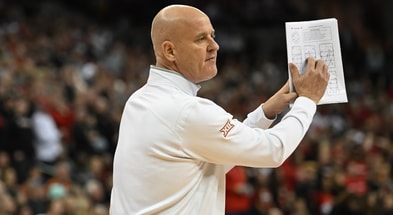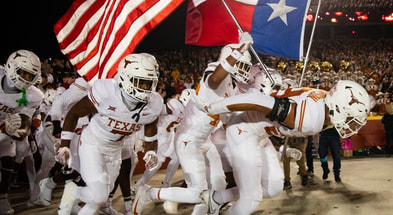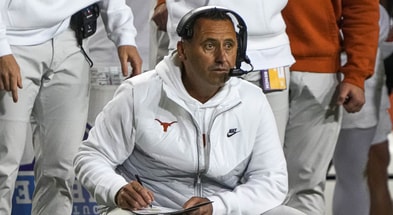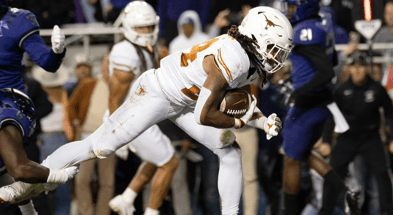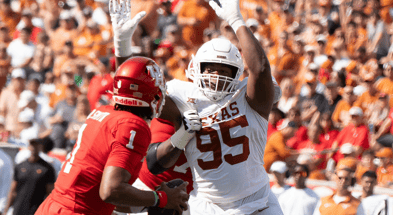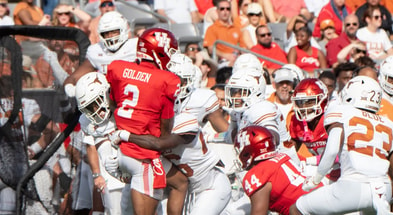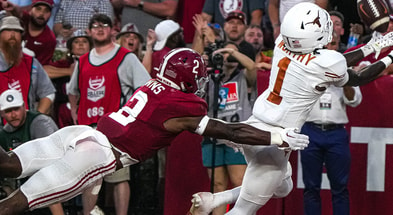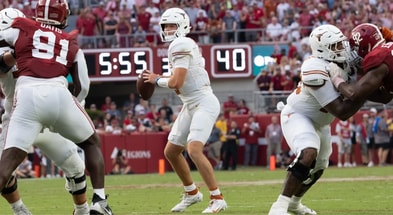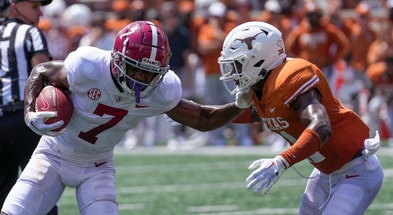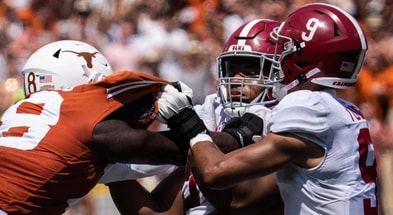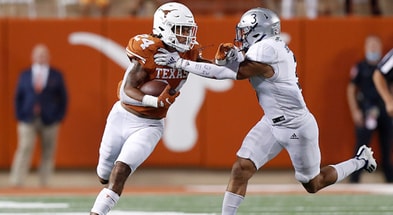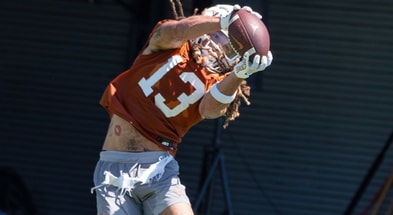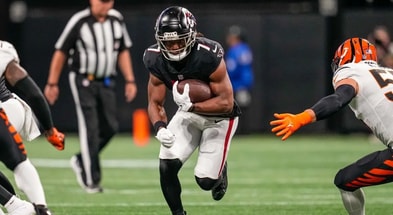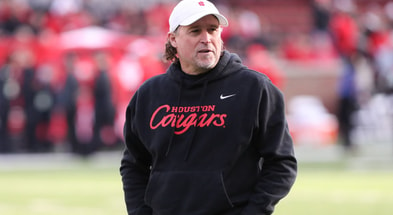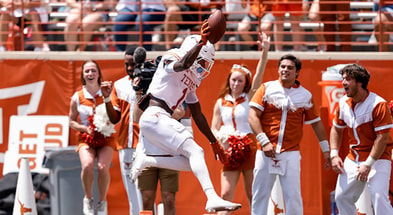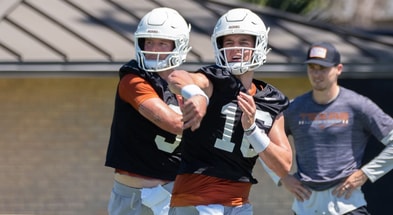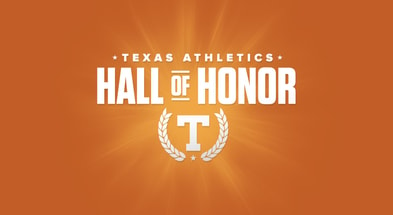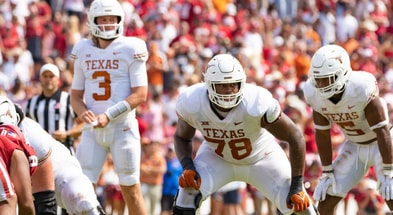Texas Longhorns football: Much ado about fourth down
Texas’ performance on money downs against Texas Tech in UT’s 37-34 overtime loss has drawn plenty of attention in the leadup to the Longhorns’ Saturday matchup with West Virginia, with a lot of consternation specifically surrounding fourth-down defense.
[Get ONE MONTH of Inside Texas Plus for $1!]
‘If Tech did it, why won’t WVU?’ is a reasonable question after the events at Jones AT&T Stadium.
The Longhorns have turned opponents over on downs on 7-of-14 fourth-down opportunities this season, but that number was 1-of-6 prior to the trip to Lubbock. Texas Tech was 6-of-8 versus the Longhorns, a key component of TTU’s win in OT.
Add the fact the Mountaineers are tied for fifth nationally in fourth-down conversion percentage at 90 percent, and many burnt orange faithful are fearing a repeat performance this Saturday.
The circumstances are slightly different when it comes to the Mountaineers, though, considering five of those nine conversions came against a FCS opponent in Towson. Plus, West Virginia may not sell out to win the game in the exact same fashion as Red Raider head coach Joey McGuire, nor do they have a quarterback who can fall forward and gain yards like Donovan Smith.
But with the way college football is trending with regards to fourth down, and with the Longhorns’ struggles in those situations, this is a part of the game Steve Sarkisian and his staff dedicated attention to prior to Texas’ second Big 12 contest.
“I think we put some extra time into third-down and fourth-down defense to make sure that we can get off the field, so that we don’t let them extend their drives,” Sarkisian said Thursday.
WVU doesn’t utilize the same type of offensive personnel as the Red Raiders. However, the Mountaineers appear to buy into the trend prevalent in college football of abiding by analytical suggestions, at least most of the time.
Remember when former Texas head coach Tom Herman would mention “the binder” regarding decisions whether or not to go? Every team these days has a binder, or at least teams interested in leaving no stone unturned for a competitive advantage.
Texas is included in that group, but Sarkisian does choose to factor in the human element in this part of his weekly game plan.
“I think a lot of coaches nowadays are buying into the whole analytics aspect of the game, meaning everybody subscribes to the same company and they spit out these numbers, and the numbers tell you what you what you should or shouldn’t do,” Sarkisian said Thursday. “A computer tells you, and there’s some people that live and die by what the computer tells you.”
Sometimes, the decisions the computer might think is a no-brainer in reality is a head-scratcher.
“I can tell you I’ve gone into a game this year where a computer told me 4th-and-1 on my own 10-yard-line, I should go for it,” Sarkisian said. “To me, as a coach who has been around the game, I don’t know if that’s a really wise decision.”
As some of the graphics above illustrate, analytics suggest that going for it on fourth down is the right call when there are two or fewer yards to go on almost every occasion. They directly back up Sarkisian’s claim.
That’s all to say, more teams believe leaving the punter or the kicker on the sideline is actually the smarter call these days thanks to mathematic suggestions. The allure of six points as opposed to three (or zero) has third down turning into second down more and more often. It’s additional work for defenses, but more reward if they do that work right.
“The goal is, you want to get those stops but then you’ve got to take advantage of those opportunities when you get them,” Sarkisian said.
So where do the Mountaineers stand in this regard?
First, some contextualization of that 90-percent mark. Of WVU’s nine fourth-down conversions, five came against FCS Towson.
Only one conversion in that game came when WVU was deep in its own territory, and the game was nothing close to competitive at that juncture. Also, the Mountaineer back-ups only needed one yard to move the sticks.
Three other conversions also asked the WVU offense to gain just one yard, including one at the Towson one-yard-line. The only 4th-and-long was at the Towson 32-yard-line, fringe field goal distance for a college kicker.
What about the 4-of-5 mark against FBS opponents?
The only miss was in the season-opener against Pittsburgh, and there was no decision to be made. West Virginia needed a touchdown in the final minute, and failed to complete a 4th-and-16 in Panther territory.
Against Kansas, two of the “go for it” calls were likely analytically driven but nothing worth second-guessing. WVU went for it with three yards to go on the Jayhawk 25 and got the first down, eventually scoring a touchdown later in the drive to take an early 14-0 lead. Later in the contest, the Mountaineer offense needed three yards again at the KU 43-yard-line and converted. That drive eventually ended in a field goal to pull WVU within eight after Kansas had taken the lead.
Once again, there were no analytics to consult on their third attempt. WVU went for it on 4th-and-5 from its own 20 on its final drive, eventually leading to the game-tying touchdown.
WVU went to Blacksburg, Va. after the Towson game to take on Virginia Tech, and converted the only fourth-down attempt of the contest. Facing 4th-and-2 on the Hokie 31, the offense converted and the drive eventually ended in a field goal.
In essence, WVU is one of the teams that subscribes to analytical suggestions, and Texas needs to be ready to make fourth-down stops whenever the Mountaineer offense is on the field, regardless of field position.
“I can’t predict on who does what and how they do it,” Sarkisian said. “I just know we need to be prepared for people to stay aggressive that way, then ultimately for them to have to live with the consequences.”
